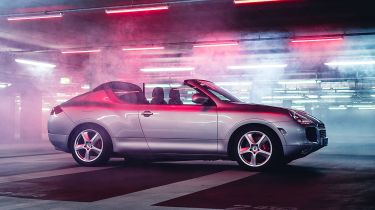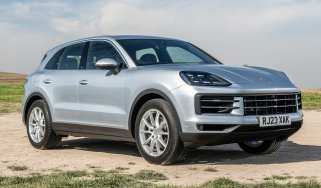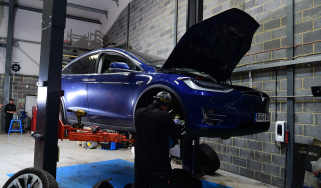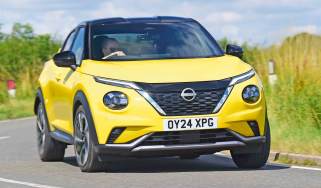A Mk1 Porsche Cayenne Convertible really was planned, and built
Convertible was one of three body shapes planned for the original Porsche Cayenne that never made it to market
Porsche has revealed three alternative body shapes were considered for the original 2002 Cayenne SUV – a coupe, stretched seven-seater and a convertible – as the company’s first off-roader celebrates its 20th anniversary.
Amazingly, only the convertible model was built, an example of which can be found at the Porsche Museum in Stuttgart. Known as a Package Function Model (PFM), it's essentially a rolling chassis, meaning the 4.8m-long concept has none of the body stiffening needed to provide "safe and stable driving”. Instead, it is driven from place to place on the back of a flatbed.
The design concept was only ever supposed to answer four questions. Was the back seat roomy enough? Did the 200mm longer doors make backseat access feasible? Could the Cayenne’s body accommodate a folding fabric roof? And what shape should its rear end be?
In fact, Porsche produced an asymmetrical rear end on the car – with low and high-set tail lights – to help its designers choose a preferred look.
And the roof? Its theatrical mechanism would have been similar to the one employed first by the Porsche 911 991 Targa, which has a boot cover that lifts clear of the bodywork allowing the roof to stow below. The roof never made it past the computer-simulation stage, though, meaning the Cayenne Convertible PFM’s top has to be erected by hand.
Why wasn’t the Porsche Cayenne convertible built? The concept was deemed unprofitable due to its challenging aesthetics. Or, as Michael Mauer, Porsche’s chief designer, puts it: “An SUV as a convertible is a challenge both aesthetically and formally. An SUV always has a large and heavy body. You combine this with a small top half and then cut off the roof – you get very strange shapes emerging from that.”
Would you have joined the waiting list for a Porsche Cayenne Convertible in the early 2000s? Let us know in the comments
Find a car with the experts








